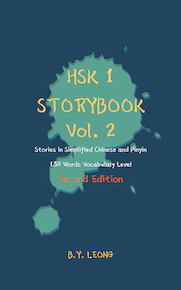Welcome to the first step in your journey to mastering Mandarin Chinese! As you embark on this exciting path, understanding HSK 1 vocabulary is crucial for laying a strong foundation. HSK 1, or Hanyu Shuiping Kaoshi Level 1, is the first level of the official Chinese proficiency test and focuses on essential words and phrases you’ll need for everyday communication. In this blog post, we’ll delve into the must-know vocabulary and provide practical tips to use them in real-world settings.

1. Greetings and Basic Interactions:
- 你好 (Nǐ hǎo) – Hello: This is the first word anyone learns in Chinese. It’s the universal greeting used in any setting, whether formal or informal.
- 谢谢 (Xièxiè) – Thank you: Expressing gratitude is essential in any language, and “谢谢” is the simplest way to do it in Chinese.
- 是 (Shì) – Is/Am/Are: As a fundamental verb, knowing how to use “是” will help you construct basic sentences to identify objects and people.
2. Numbers and Dates:
- 一到十 (Yī dào shí) – One to Ten: Numbers are everywhere, from shopping to setting appointments. Mastering one to ten is a great start.
- 今天 (Jīntiān) – Today; 明天 (Míngtiān) – Tomorrow: Discussing dates is part of daily conversations. These words will help you plan and organize your activities.
3. Common Nouns:
- 家 (Jiā) – Home/House: Talking about your home is a common topic in initial conversations.
- 书 (Shū) – Book: Whether you love reading or need to discuss school materials, “书” is a word you’ll frequently encounter.
4. Descriptive Adjectives:
- 好 (Hǎo) – Good: A versatile adjective, “好” can describe anything from taste to quality.
- 大 (Dà) – Big; 小 (Xiǎo) – Small: Describing size is part of everyday interactions, especially when shopping or navigating through places.
5. Essential Verbs:
- 去 (Qù) – To go: Whether you’re going to work, school, or just out, “去” is indispensable.
- 吃 (Chī) – To eat: Food is a universal topic, and “吃” will help you share your culinary adventures or simply ask someone if they’ve eaten.
6. Polite Phrases:
- 对不起 (Duìbuqǐ) – Sorry: Making mistakes is human, and knowing how to apologize is important.
- 请 (Qǐng) – Please: Politeness opens doors, and “请” is the key.
Practical Tips for Real-World Application:
- Flashcards: Create flashcards with the Chinese character, pinyin, and meaning. Carry them with you and review them during your free time.
- Language Partners: Practice with native speakers or fellow learners. Real conversation helps in memorizing and understanding the context of words.
- Label Everything: Label objects in your home with their Chinese names. It’s an effective way to remember vocabulary through daily exposure.
- Listen and Repeat: Listen to Chinese music or watch shows with subtitles. Repeat phrases and words you hear.
Embrace the Journey:
Starting with HSK 1 vocabulary might seem basic, but these words are the building blocks for more complex conversations. As you learn, remember to practice regularly, be patient with yourself, and enjoy the cultural insights that come with every new word. Utilize resources like the All Musing’s Free HSK Vocabulary Quiz and HSK Vocabulary Lists to enhance your learning. Before you know it, you’ll be ready to move on to more advanced levels and deepen your understanding of this rich and fascinating language.
Embarking on the HSK journey is not just about learning a language; it’s about opening doors to a new world of culture, thinking, and opportunities. So, dive into your studies with enthusiasm and curiosity, and watch as the world of Mandarin Chinese unfolds before you. 加油 (Jiāyóu) – Keep it up!
HSK 1 Storybook Series
Chinese Sentence Structure – HSK 1 Grammar Workbook



